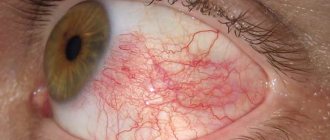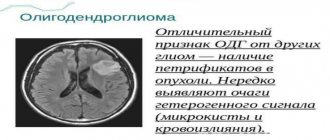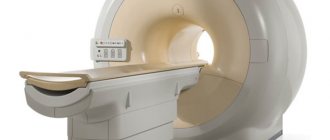Causes of cerebral contusion
A brain contusion is damage directly to brain tissue, which leads to the death of nerve cells. Can be unilateral or bilateral.
- Located both on the side of the damaged factor and on the opposite side
- The most common damage to the brain is caused by traumatic brain injury.
- Occurs as a result of a road traffic accident, beating, falling from a height, overturning heavy objects on the head, both at work and in everyday life, when falling from a height of one’s height during an epileptic attack or conditions accompanied by loss of consciousness (hypertensive, hypotonic crises, etc.).
- When an impact occurs, damage occurs to the structures of the brain, the vessels that feed them (as a result of the impact itself), as well as exposure to decay products of damaged cells.
The most common localization: fronto-occipital, occipital, parietal areas.
- When large vessels of the brain are damaged, intracerebral hemorrhage develops, which can lead to the formation of hematomas.
A distinction is made between mild, moderate and severe brain contusion, depending on the length of time the patient remains unconscious.
Brain contusion 1st degree (mild):
- occurs in 10-15% of cases of all traumatic brain injuries.
- loss of consciousness lasts from several minutes to tens of minutes from the moment of injury (in this case, headache, nausea, vomiting, increased blood pressure are observed)
Moderate brain contusion:
- occurs in 8-10% of victims
- from tens of minutes to hours (meningeal symptom complex, skull fracture is added)
Severe brain contusion:
- observed in 5-7% of patients
- from several hours to several weeks (the patient is in a coma)
Symptoms of concussion
The international classification ICD 10 classifies brain contusion as an intracranial injury and is classified depending on the type of brain injury under the code S06.3 “Focal brain injury” or S06.2 “Diffuse brain injury.”
As mentioned earlier, each degree of contusion in a victim is characterized by the appearance of certain symptoms of disruption of the central nervous system, caused by the appearance of several foci of destruction of brain matter.
Some of the most common consequences of this type of injury include:
- Light degree:
- short-term loss of consciousness (up to 10 minutes); prolonged headache;
- dizziness;
- nausea, vomiting;
- noise in ears;
- increased heart rate, respiration, blood pressure;
- clouding of consciousness;
- muscle hypertonicity;
- “veil before the eyes”;
- decreased performance of the sense of touch.
- Average degree:
- loss of consciousness for a long period of time (10 minutes or more);
- retrograde amnesia;
- severe headaches;
- nose and ear bleeding;
- dizziness;
- changes in consciousness, up to the development of psychosis;
- vomit;
- increased blood pressure, heavy breathing, increased heart rate.
- Severe degree:
- coma or prolonged loss of consciousness for a period of time up to 3 weeks;
- disruption of life support systems due to damage to the structures of the reticular formation;
- mental disorders;
- paralysis;
- severe tachycardia;
- epileptic seizures;
- hemorrhages in the brain and subarachnoid space.
Often, even after receiving a mild concussion, the victim can change his behavioral habits, and his character changes not for the better, which is noticeable to others.
Therefore, to prevent the development of complications, such patients should remain under the supervision of specialists.
Which method of diagnosing a brain contusion to choose: MRI or CT
Selection method:
- MSCT
What will CT images of the head show in case of brain contusion?
- Hypodense area in the acute stage, later - a hyperdense focus with a hypodense rim (perifocal edema)
- Size: from a few millimeters to several centimeters
- The presence of hemorrhage at the site of impact and hemorrhage due to the “counter-impact” mechanism, and the size of the latter may exceed the size of the hemorrhage at the site of application of the traumatic force
Volumetric effects may be observed depending on the size of the hemorrhage and the severity of edema:
- Swelling of the brain with loss of cortical definition.
- Displacement of midline structures.
- Compression of the ventricular system with impaired cerebrospinal fluid circulation.
- Compression of the surrounding tank.
Is MRI of the brain informative for concussion?
- Not indicated in acute cases
- High sensitivity in later stages of hemorrhages (subacute, chronic)
- Hypointense susceptibility artifacts on T2-weighted images
- The signal intensity on T1- and T2-weighted images corresponds to the intensity of the hemorrhage signal at the corresponding stage of the hemoglobin breakdown process
Hemorrhagic contusion in the superior frontal gyrus (24 hours after injury). CT, axial slice
Hemorrhagic contusion in both frontal lobes, 3 days old.
MRI T2*-WI (a) and T1-WI (b) in the axial plane. Lack of signal due to susceptibility artifact on T2*-weighted images (a). Hyperintense signal (methemoglobin) on T1-weighted image (b).
Hemorrhagic brain contusion
Hemorrhagic brain contusion is a type of intracranial (intracranial) hemorrhage that often occurs with severe traumatic brain injury.
Hemorrhagic brain contusions on computed tomography usually appear as zones of hyperdense density at the base of the frontal lobes adjacent to the bottom of the anterior cranial fossa, as well as at the poles of the temporal lobes.
Epidemiology
A bruise, by definition, is the result of a head injury, and thus is more common in young men. Typical causes include traffic accidents or situations where the head hits a hard surface.
Pathology
Most bruises occur due to the impact of the brain on the internal surfaces of the natural protrusions of the skull.
Classifications
- corresponds to type IV according to the Kornienko classification
- included in the Marshall classification
Concomitant pathology
- intraventricular hemorrhage in ~2.5% [7]
Diagnostics
Brain contusions can occur in any part of the brain, but more often they tend to certain localizations, determined by the direction of the blow and the internal shape of the cranial cavity.
- bottom of the anterior cranial fossa
- temporal lobe pole
- impact and impact zone
Cortical contusions are usually better visualized on control studies due to increased volume and the development of perifocal edema. Consequently, on a control CT study, in the first few days after injury, an increase in the number and size of lesions may be observed, without worsening the patient’s clinical condition. The subsequent manifestation of the contusion will vary depending on the timing of imaging.
As a rule, they mature over several weeks: at the beginning they appear only as hemorrhagic foci, subsequently as foci with the development of perifocal edema, then gradually fade away, leaving behind more or less delimited zones of gliosis.
CT scan
In most clinics, CT is the first and only method used in the evaluation of brain contusion. The sensitivity of CT in the diagnosis of intracerebral hemorrhage is 100%.
Blood density, expressed in Housefield units, depends on protein concentration and hematocrit.
At a hematocrit of 45%, the density of blood is ~56 HU, while the density of gray matter is 37-41 HU, and white matter is 30-34 HU. Thus, the blood should be hyperdense relative to the gray or white matter. Note that in patients with anemia (hemoglobin level < 8-10 g/dL), the blood may be isodense with acute hemorrhage.
Contusions range in size from small petechial hyperdense foci in the gray and subcortical white matter to large cortical/subcortical hemorrhages.
Magnetic resonance imaging
Not routinely, MRI is useful for diagnosing cortical contusions because it has greater sensitivity for small contusions, especially when using T2* sequences such as SWI.
The intensity of the MR signal depends on the sequence used and the time elapsed from the onset of hemorrhage.
Diagnostic difficulties
The main difficulty lies in the diagnosis of small contusions near the base of the skull, where their visualization on CT is difficult due to artifacts from the bones of the base of the skull.
Differential diagnosis
- diffuse axonal injury
- cavernous venous malformation: brain contusion and blood products undergo reverse development over time, while cavernous malformation does not change over time or even vice versa, re-hemorrhage develops
- look for a connection with a venous anomaly
- presence of edema at the initial stage
- atypical localization of hemorrhage
Ancient frescoes under the iconostasis
The Assumption Cathedral, built at the end of the 15th century, is the main temple of the Kremlin, where the rulers of Russia were crowned kings. The fire of 1626 severely damaged the temple, and in 1642-1643, Tsar Mikhail Fedorovich ordered the old frescoes to be knocked down and the temple to be painted again.
What a surprise it was for modern restorers when an ancient painting turned out to be under the iconostasis. “We discovered three tiers of ornaments without inscriptions and above them medallions with images of saints,” says the curator of the cathedral, Alexei Barkov. — The top two compositions are paintings from 1643, like most of the paintings in the temple. The lower ones are either from the end of the 15th century, when the first iconostasis was painted, or from 1515, this is the date of completion of the complete painting of the cathedral.” On one of the frescoes, traces of the fastenings of the first iconostasis were found, and this makes it possible to understand why the frescoes were preserved. Most likely, it was inconvenient to shoot them down. Restorers will continue their search for ancient paintings now on the other side.
The oldest street
Several centuries ago, boyars, merchants lived on the territory of the Moscow Kremlin, monastery farmsteads and service apartments of officials were located. There were cramped narrow streets lined with various buildings.
Since the time of Ivan III, things have been constantly rebuilt here: new streets were laid, old buildings were demolished and new ones were built, monuments were erected and removed. The Kremlin today consists of spacious squares and green gardens, but one nameless street remains here. It is located between the Patriarchal Chambers and the Assumption Cathedral and leads, on the one hand, to Cathedral Square, and on the other, to the central entrance to the cathedral. Do you want to see what the Kremlin was like hundreds of years ago? Focus on the cross on the left side of the Assumption Cathedral building.
Secret well
The Corner Arsenal Tower houses the only surviving well in the Kremlin and one of the oldest in Moscow. The tower was built at the end of the 15th century on the site of a spring in order to provide water for the fortress in case of a siege. This spring turned out to be capricious: the water level rose so high several times that it flooded the entire room.
Only in 1975 did Soviet specialists manage to understand how this problem was solved in ancient times. It turns out that a gallery leads from the well to the already underground Neglinka River, where excess water is drained. And when the gallery becomes clogged with debris, the spring floods the tower. Now no one uses the well, although technically it works and still drains water into Neglinka. Tourists are prohibited from entering this well for safety reasons.
Ghosts of destroyed buildings
The Kremlin lost many architectural monuments, both in the first decade after the revolution and during numerous perestroikas before it. Interesting artifacts remained in place of some of them.
Fragments of the foundation of the Small Nicholas Palace, where Emperor Nicholas I loved to visit, are revealed on the square opposite the Tsar Bell. Nearby, fragments of the Chudov Monastery, destroyed in 1929, are also visible through the glass. Behind these archaeological sites is a new underground museum that is preparing to open soon.
Stolen silver chandelier
After Napoleon's army visited Moscow in 1812, almost all the silver disappeared from the Assumption Cathedral. Only the tomb with the relics of Metropolitan Jonah was preserved, who, according to legend, appeared to the French with a threatening fist, and they did not take risks.
But when Napoleon’s army retreated, the loot (about 300 kg of valuable metal!) was recovered and returned to the temple. At that time, it had already been melted down, and in 1817 a church chandelier - a chandelier - with images of flowers and vines was cast from it. It can be seen in the Assumption Cathedral today.
Brain contusion: signs, consequences, treatment
Contusion is a type of pathological condition of the body that develops as a result of a sudden mechanical impact on the body. Usually the damage is associated with exposure to a blast wave. An air shock wave is formed from the rupture of a projectile or from an explosion. A rapid transformation of substances occurs, which leads to the release of a powerful flow of energy.
One of the main signs of damage to brain structures is loss of consciousness. A person from a strong air strike can lose consciousness (fall into a coma) for a long time - several days or months.
The consequences of concussion are often manifested by neurological disorders - memory loss, impaired speech, visual, and auditory function. Severe pathology often leads to the development of significant mental disorders.
Types of pathology
To be contused in pathogenesis means to expose internal organs to the influence of inertial forces that arise within the body under the influence of external factors. As a result, organic changes occur in tissues. There are general and severe types of pathology.
In the first case, disorders occur as a result of damage to large areas of the body and head. Severe contusion is accompanied by significant damage, ruptures and displacement of internal organs. Depending on the severity, they are divided into: mild, moderate and severe.
Pathology of 2 and 3 degrees of severity is manifested by malfunctions in the functioning of all organs and systems.
Diagnostic methods
The examination is carried out using instrumental methods - CT, MRI, EEG. Additionally, blood tests and lumbar puncture tests are performed. The degree of neurological impairment is determined using special tests. Level of disturbance of consciousness – according to the Glasgow scale.
Symptoms and severity
Experts consider several degrees of severity of concussion:
- Mild degree . Mild contusion is characterized by loss of consciousness from several to 10-15 minutes. As soon as the victim comes to his senses, he complains of headaches, nausea, and dizziness. Vomiting is observed, and sometimes repeated. The temperature may increase slightly, breathing remains unchanged. Tachycardia or bradycardia may occur.
- Average degree . This degree is characterized by loss of consciousness from several minutes to several hours. Patients report severe headaches. Repeated vomiting may occur. Sometimes patients experience mental disorders. Symptoms of concussion can be expressed in disorders of sensitivity, speech, and paresis of the limbs.
- Severe degree . Trauma is characterized by loss of consciousness lasting from several hours to several weeks. Patients have disturbances of vital functions: arterial hypertension, respiratory disorders, tachycardia. Ptosis and problems with swallowing often appear. Gross residual effects often appear, primarily in the mental and motor spheres.
Whatever the severity, it is important to immediately provide help and contact specialists.








